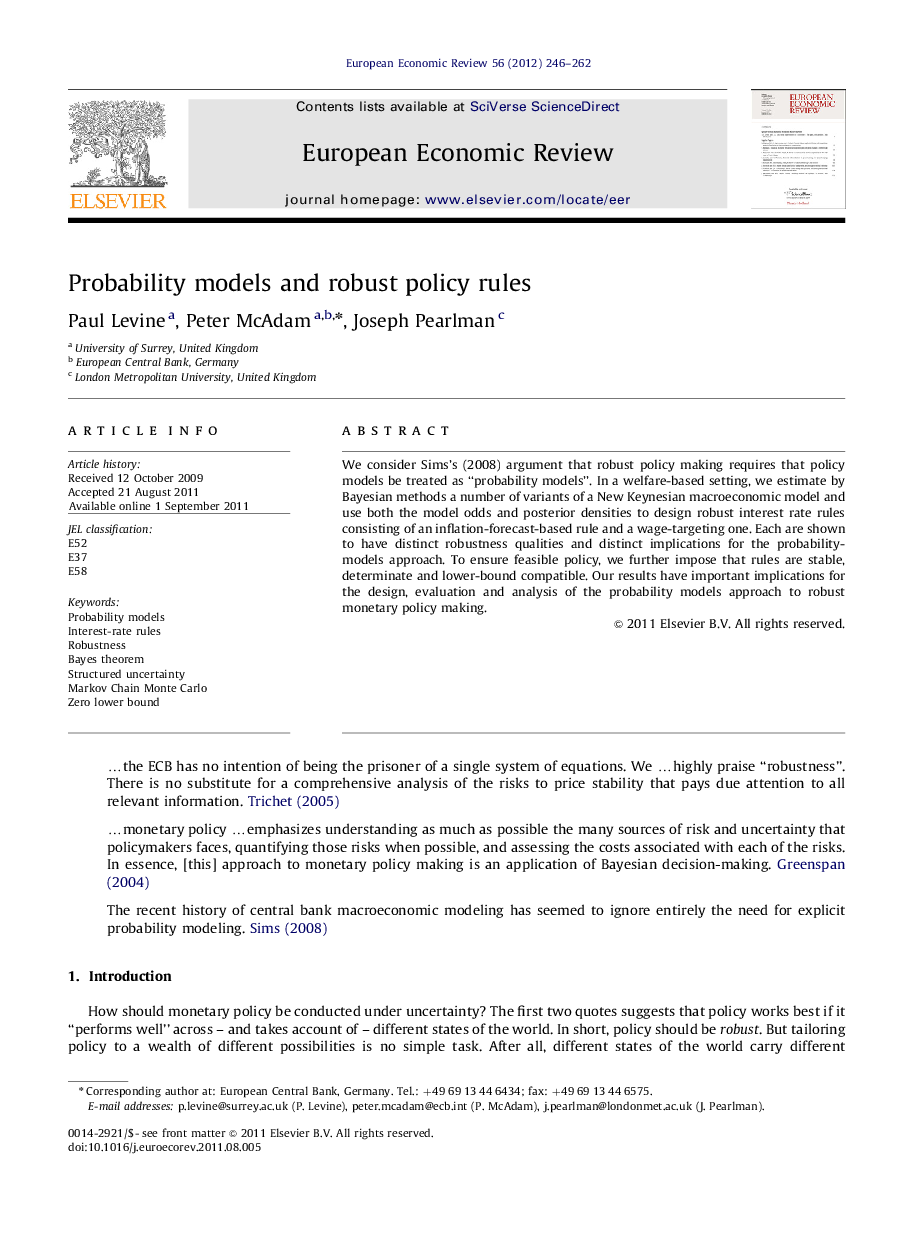| Article ID | Journal | Published Year | Pages | File Type |
|---|---|---|---|---|
| 5067221 | European Economic Review | 2012 | 17 Pages |
We consider Sims's (2008) argument that robust policy making requires that policy models be treated as “probability models”. In a welfare-based setting, we estimate by Bayesian methods a number of variants of a New Keynesian macroeconomic model and use both the model odds and posterior densities to design robust interest rate rules consisting of an inflation-forecast-based rule and a wage-targeting one. Each are shown to have distinct robustness qualities and distinct implications for the probability-models approach. To ensure feasible policy, we further impose that rules are stable, determinate and lower-bound compatible. Our results have important implications for the design, evaluation and analysis of the probability models approach to robust monetary policy making.
⺠We consider the argument that robust policy making requires a “probability-models” approach. ⺠We estimate variants of the standard New Keynesian model. ⺠We use the model odds and posterior densities to design different robust interest rate rules. ⺠Each of these rules have distinct robustness qualities and implications for the probability-models approach. ⺠Our results have important implications for the design, evaluation and analysis of the probability models approach to policy.
